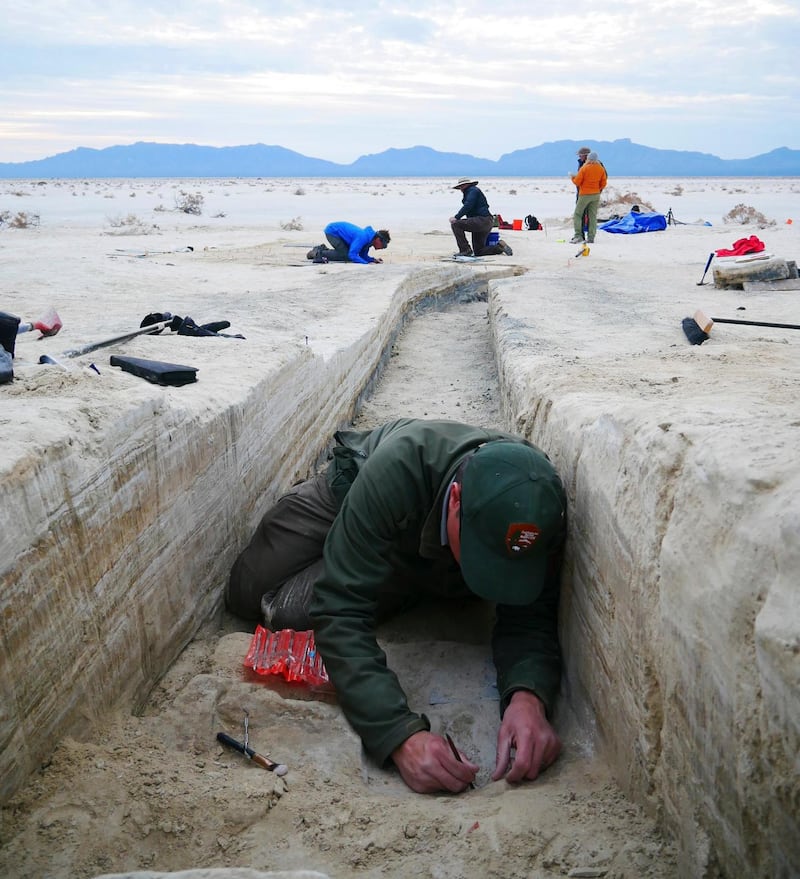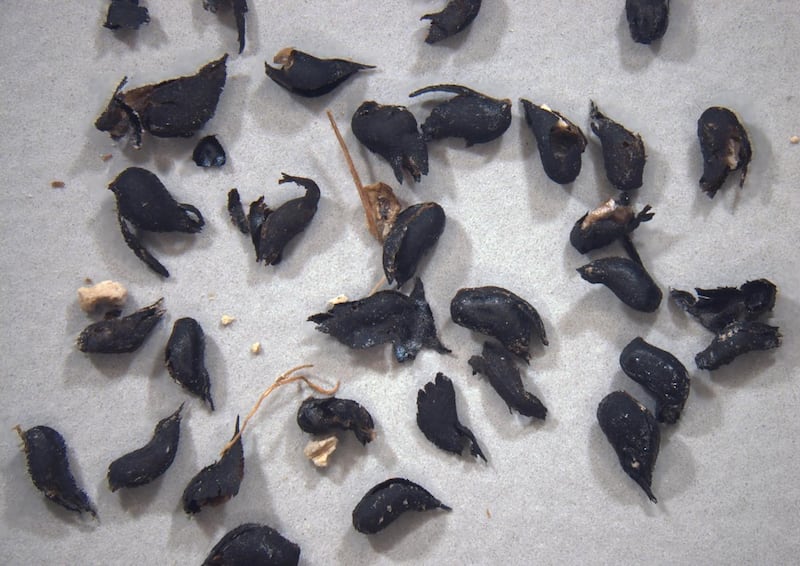Ancient human footprints preserved in the ground across White Sands National Park, in New Mexico, are astonishingly old, scientists reported on Thursday, dating back about 23,000 years to the ice age. The results, if they hold up to scrutiny, would rejuvenate the scientific debate about how humans first spread across the Americas, implying that they did so at a time when massive glaciers covered much of their path.
Researchers who have argued for such an early arrival hail the new study as firm proof. “I think this is probably the biggest discovery about the peopling of America in 100 years,” says Ciprian Ardelean, an archaeologist at Autonomous University of Zacatecas, in Mexico, who was not involved in the work. “I don’t know what gods they prayed to, but this is a dream find.”
For decades many archaeologists have maintained that humans spread across North and South America only at the end of the last ice age. They pointed to the oldest known tools, including spear tips, scrapers and needles, dating back about 13,000 years. The technology was known as Clovis, named for the New Mexico town, where some of these first instruments came to light.
The age of the Clovis tools lined up neatly with the retreat of the glaciers. That alignment bolstered a scenario in which Siberian hunter-gatherers moved during the ice age into Alaska, where they lived for generations until ice-free corridors opened and allowed them to expand southward.
But starting in the 1970s, some archaeologists began publishing older evidence of humanity's presence in North America. Last year Ardelean and his colleagues published a report of stone tools in a mountain cave in Mexico dating back 26,000 years.
Other experts have been skeptical of such ancient finds. Ben Potter, an archaeologist at the Arctic Studies Centre at Liaocheng University, in China, says some of these supposed tools might actually be oddly shaped rocks. Potter also questions some of the dates scientists have assigned to their finds. If a tool sinks into underlying sediment, for example, it may appear to be older than it really is.

The footprints were first discovered in 2009 by David Bustos, the park's resource programme manager. Over the years he has brought in an international team of scientists to help make sense of the finds. Together they have found thousands of human footprints across more than 300sq km of the park. One path was made by someone walking in a straight line for almost 2.5km. Another shows a mother setting her baby down on the ground. Other tracks were made by children.
"The children tend to be more energetic," says Sally Reynolds, a palaeontologist at Bournemouth University, in England, and an author of the new study. "They're a lot more playful, jumping up and down." Mathew Stewart, a zooarchaeologist at the Max Planck Institute for Chemical Ecology in Germany, who was not involved in the study, says the evidence that humans had left the footprints is "unequivocal".
The footprints were formed when people strode over damp, sandy ground on the margin of a lake. Later, sediments gently filled in the prints, and the ground hardened. But subsequent erosion resurfaced the prints. In some cases, the impressions are only visible when the ground is unusually wet or dry – otherwise they are invisible to the naked eye. But ground-penetrating radar can reveal their 3D structure, including the heels and toes.
The work of determining the age of the prints fell to Jeffrey Pigati and Kathleen Springer, two research geologists at the US Geological Survey. In 2019 they went to White Sands to get a feel for the site. Walking around some of the footprints, the researchers sometimes came across ancient seeds of ditch grass that had grown by the lake. In some spots the abundant seeds formed thick blankets.

The researchers brought some of the seeds back to their lab and measured the carbon in them to determine their age. The results came as a shock: the ditch grass had grown thousands of years before the end of the last ice age. Pigati and Springer knew those numbers would be controversial. So they embarked on a far more ambitious study. “The darts are going to start flying, so we better be ready for them,” Pigati recalls.
The scientists dug a trench near one cluster of human and animal footprints to get a tighter estimate of their age. On the side of the trench, they could see layer after layer of sediment. Carefully mapping the surrounding ground, they were able to trace the footprints of humans and animals to six layers in the trench, interspersed with 11 seed beds.
The researchers collected ditch grass seeds from each bed and measured their carbon. These measurements confirmed the initial results: the oldest footprints at the site – left by an adult human and a mammoth – were located below a seed bed dating back about 22,800 years.
In other words, the people who left the footprints walked around White Sands about 10,000 years before the Clovis people. The youngest footprints, the researchers estimated, dated to about 21,130 years ago. That meant that people lived or regularly visited the lake for about 2,000 years.

Bustos and his colleagues have more investigations planned at White Sands. They want to learn about the behaviour of the people who left their footprints there. Did they hunt the animals around them? Did they live permanently at the lake or just pay it visits?
They must work quickly. The erosion that has revealed the footprints will erase them from the landscape in a matter of months or years. Countless footprints are disappearing before the scientists even lay eyes on them. "It's kind of heartbreaking," Bustos says. "We're racing to try to document what we can." – This article originally appeared in The New York Times









